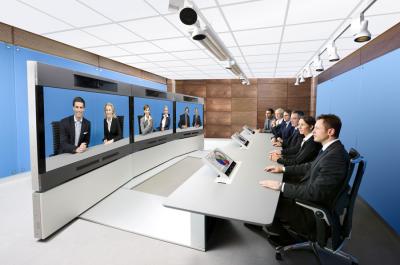Polycom and Siemens Team Up Over Video Conferencing

Siemens Enterprise Communications is to integrate Polycom’s telepresence technology into its unified communications (UC) offerings
There was a new twist to the increasingly competitive video conferencing sector after Siemens Enterprise Communications Group announced it would integrate Polycom’s telepresence technology into its unified communications (UC) offerings.
The alliance and resale agreements between the two companies, announced 21 January, comes as Cisco Systems continues on with plans to buy video conferencing rival Tandberg for $3.4 billion (£2.1 billion), and other vendors, such as Logitech, get into the space.
At the same time, Mitel is embarking on a four-month-long bus tour to demonstrate the capabilities of its UC (unified communications) offerings – including its TeleCollaboration telepresence software – to partners and customers.
Video conferencing and telepresence technology is getting an increasingly close look by businesses looking for ways to reduce travel expenses and improve collaboration among employees and with customers. That is dovetailing with the improvement in the technology in recent years.

Cisco officials have been vocal about the promise of video, saying that the addressable market for its video and TelePresence products and services could reach $50 billion (£31 billion) by 2013.
“Everyone is trying to curtail costs,” Jason Macres, vice president of video solutions at SEN (Siemens Enterprise Communications Group), said in an interview. “People are getting interested in the ROI of video and in addressing travel costs. The ROI is very show now, and the quality of the experience is very high.”
Partnerships like the one between SEN Group and Polycom enable both players to grow their customer base and expand the reach of their offerings, which is important as rivals like Cisco continue to grow.
Macres said SEN Group, which also partners with Tandberg, will bring Polycom’s telepresence products into Siemens’ OpenScape UC platform, which is designed to offer customers a tightly integrated UC offering that includes video.
Polycom’s RMX and HDX products will be integrated into SEN Group’s next release of its OpenScape Video offering – version 2.1 – which is due out in March, he said. The Polycom technologies will be supported by SEN Group’s OpenScale Services unit.
The deal with SEN Group is part of a larger strategy by Polycom to collaborate with other vendors that need greater video capabilities in their UC offerings, Mark Roberts, Polycom’s vice president of partnering and marketing, said in an interview. Currently many businesses use video conferencing as “an island,” Roberts said. Integrating video into a larger UC portfolio makes it more accessible.
Other partners in Polycom’s Open Collaboration Network include Avaya, IBM, Cisco, Microsoft and Broadsoft.
For its part, Mitel is looking to give businesses – particularly SMBs – a less costly alternative to telepresence offerings from the likes of Cisco and Tandberg, said Steven Beamish, vice president of business development and marketing for Mitel.
The company’s TeleCollaboration product, released in 2009, is a software offering that lets businesses use their own displays and furniture, but still enables employees to collaborate closely on documents, Beamish said.